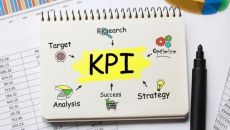Read the following passage carefully, and then select the best option A, B, C or D to complete it
Special Education, specially designed instruction to (24) _______ the unique needs and abilities of disabled or gifted children. Disabled children have conditions (25) _______ adversely affect their progress in conventional education programs. Gifted children, who demonstrate high capacity in intellectual, (26) _______, or artistic areas, may also fare poorly in regular education programs. Special education services can help both disabled and (27) _______ children make progress in education programs. Most children served by special education programs are (28) _______ the ages of 6 and 17.
In the United States, federal law requires states to identify and serve all children (29) _______ disabilities. Public education and health officials in the United States identified approximately 5.4 million infants, toddlers, (30) _______, and youth as disabled in 1994. That same year, the U.S. Department of Education reported that 12.2 percent of all children (31) _______ the age of 21 received some form of special education. The most frequently reported disabilities are speech or language impairments; mental retardation and (32) _______ developmental disorders; serious emotional disturbance; and specific learning disorders, (33) _______ memory disorders. Other disabilities include hearing, visual, or orthopedic impairments; autism; (34) _______ traumatic brain injury. An increasing number of children in the United States are identified as having attention-deficit hyperactivity disorder (ADHD) and (35) _______ special education services.
Many schools in the United States provide special education services (36) _______ gifted children, although federal law does not mandate these services. Gifted children demonstrate (37) _______ high abilities in intellectual, creative, academic, leadership, or artistic areas. Estimates of the gifted (38) _______ in the United States range from 3 to 15 percent of all schoolchildren.
Câu 24 : (24) _______
Hãy suy nghĩ và trả lời câu hỏi trước khi xem đáp án
Lời giải:
Báo saiSpecial Education, specially designed instruction to meet the unique needs and abilities of disabled or gifted children.
Dịch: Giáo dục Đặc biệt, chương trình giảng dạy được thiết kế đặc biệt để đáp ứng nhu cầu và khả năng riêng của trẻ em khuyết tật hoặc có năng khiếu.
Câu 25 : (25) _______
Hãy suy nghĩ và trả lời câu hỏi trước khi xem đáp án
Lời giải:
Báo saiDisabled children have conditions that adversely affect their progress in conventional education programs.
Dịch: Trẻ em có khiếm khuyết có tình trạng mà làm ảnh hưởng xấu đến tiến hộ trong các chương trình giáo dục truyền thống.
Câu 26 : (26) _______
Hãy suy nghĩ và trả lời câu hỏi trước khi xem đáp án
Lời giải:
Báo saiGifted children, who demonstrate high capacity in intellectual, (26) creative, or artistic areas, may also fare poorly in regular education programs.
Dịch: Trẻ năng khiếu, những trẻ mà có khả năng cao trong lĩnh vực trí tuệ, sáng tạo và nghệ thuật cũng không phát triển được tốt ở chương trình giáo dục thông thường.
Câu 27 : (27) _______
Hãy suy nghĩ và trả lời câu hỏi trước khi xem đáp án
Lời giải:
Báo saiSpecial education services can help both disabled and (27) gifted children make progress in education programs.
Dịch: Các dịch vụ giáo dục đặc biệt có thể giúp cả trẻ em khuyết tật và trẻ em có năng khiếu tiến bộ trong các chương trình giáo dục.
Câu 28 : (28) _______
Hãy suy nghĩ và trả lời câu hỏi trước khi xem đáp án
Lời giải:
Báo saiMost children served by special education programs are (28) between the ages of 6 and 17.
Cấu trúc: between ......... and .........
Dịch: Hầu hết trẻ em được phục vụ bởi các chương trình giáo dục đặc biệt ở độ tuổi từ 6 đến 17.
Câu 29 : (29) _______
Hãy suy nghĩ và trả lời câu hỏi trước khi xem đáp án
Lời giải:
Báo saiIn the United States, federal law requires states to identify and serve all children (29) with disabilities.
Dịch: Tại Hoa Kỳ, luật liên bang yêu cầu các tiểu bang xác định và phục vụ tất cả trẻ em khuyết tật.
Câu 30 : (30) _______
Hãy suy nghĩ và trả lời câu hỏi trước khi xem đáp án
Lời giải:
Báo saiPublic education and health officials in the United States identified approximately 5.4 million infants, toddlers, (30) children, and youth as disabled in 1994.
Dịch: Các quan chức giáo dục và y tế công ở Hoa Kỳ đã xác định khoảng 5,4 triệu trẻ sơ sinh, trẻ mới biết đi, trẻ em và thanh thiếu niên là người khuyết tật vào năm 1994.
Câu 31 : (31) _______
Hãy suy nghĩ và trả lời câu hỏi trước khi xem đáp án
Lời giải:
Báo saiThat same year, the U.S. Department of Education reported that 12.2 percent of all children (31) at the age of 21 received some form of special education.
Dịch: Cùng năm đó, Bộ Giáo dục Hoa Kỳ báo cáo rằng 12,2 phần trăm tất cả trẻ em ở tuổi 21 được nhận một số hình thức giáo dục đặc biệt.
Câu 32 : (32) _______
Hãy suy nghĩ và trả lời câu hỏi trước khi xem đáp án
Lời giải:
Báo sai“The most frequently reported disabilities are speech or language impairments; mental retardation and (32) other developmental disorders; serious emotional disturbance; and specific learning disorders, ....
Dịch: Các khiếm khuyết thường thấy nhất là lời nói hay ngôn ngữ không hoàn chỉnh, thiểu năng trí tuệ và các khiếm khuyết về phát triển, tổn thương về ình cảm, hay các rối loạn trong học tập cụ thể, ....
Câu 33 : (33) _______
Hãy suy nghĩ và trả lời câu hỏi trước khi xem đáp án
Lời giải:
Báo sai“The most frequently reported disabilities are speech or language impairments; mental retardation and other developmental disorders; serious emotional disturbance; and specific learning disorders, (33) such as memory disorders.”.
Dịch: Các khiếm khuyết thường thấy nhất là lời nói hay ngôn ngữ không hoàn chỉnh, thiểu năng trí tuệ và các khiếm khuyết về phát triển, tổn thương về ình cảm, hay các rối loạn trong học tập cụ thể, như rối loạn trí nhớ.
Câu 34 : (34) _______
Hãy suy nghĩ và trả lời câu hỏi trước khi xem đáp án
Lời giải:
Báo saiOther disabilities include hearing, visual, or orthopedic impairments; autism; (34) and traumatic brain injury.
Dịch: Các khuyết tật khác bao gồm khiếm khuyết về thính giác, thị giác hoặc chỉnh hình; tự kỷ ám thị; và chấn thương sọ não.
Câu 35 : (35) _______
Hãy suy nghĩ và trả lời câu hỏi trước khi xem đáp án
Lời giải:
Báo saiAn increasing number of children in the United States are identified as having attention-deficit hyperactivity disorder (ADHD) and (35) receive special education services.
Dịch: Càng ngày càng có nhiều trẻ ở Mỹ được nhận thấy có chứng rối loạn tăng động giảm chú ý và nhận được giáo dục đặc biệt.
Câu 36 : (36) _______
Hãy suy nghĩ và trả lời câu hỏi trước khi xem đáp án
Lời giải:
Báo saiMany schools in the United States provide special education services (36) for gifted children, although federal law does not mandate these services.
Dịch: Nhiều trường học ở Hoa Kỳ cung cấp dịch vụ giáo dục đặc biệt cho trẻ em có năng khiếu, mặc dù luật liên bang không bắt buộc các dịch vụ này.
Câu 37 : (37) _______
Hãy suy nghĩ và trả lời câu hỏi trước khi xem đáp án
Lời giải:
Báo saiGifted children demonstrate (37) exceptionally high abilities in intellectual, creative, academic, leadership, or artistic areas.
Chỗ trống cần điền là một trạng từ
Dịch: Trẻ em có năng khiếu thể hiện khả năng đặc biệt cao trong các lĩnh vực trí tuệ, sáng tạo, học thuật, lãnh đạo hoặc nghệ thuật.
Câu 38 : (38) _______
Hãy suy nghĩ và trả lời câu hỏi trước khi xem đáp án
Lời giải:
Báo saiEstimates of the gifted (38) population in the United States range from 3 to 15 percent of all schoolchildren.
Dịch: Ước tính dân số có năng khiếu ở Hoa Kỳ nằm trong khoảng từ 3 đến 15 phần trăm tổng số học sinh đi học.
Đề thi HK1 môn Tiếng Anh 10 năm 2021-2022
Trường THPT Trưng Vương














